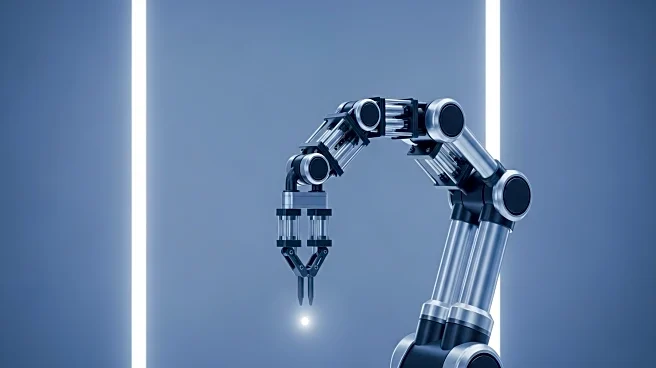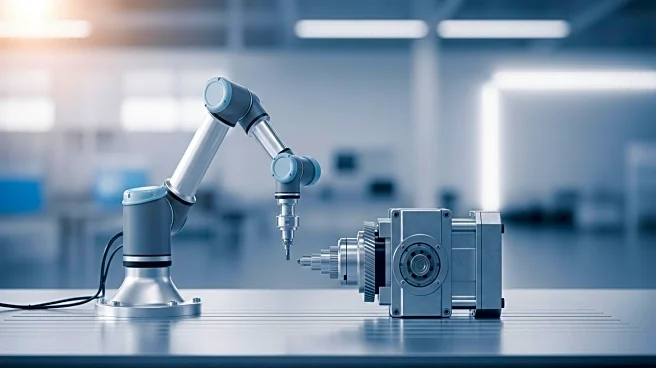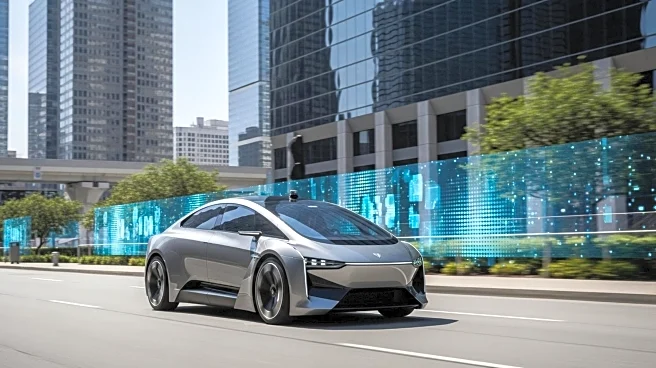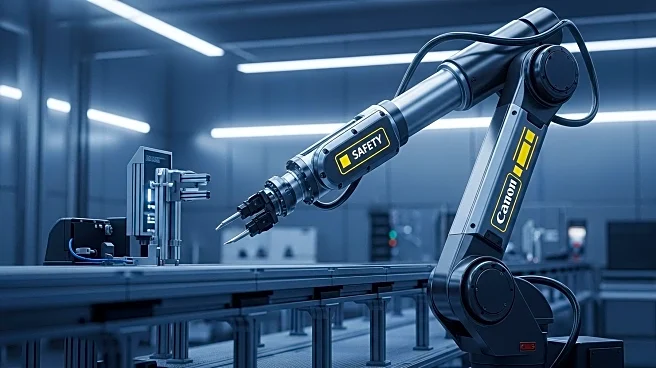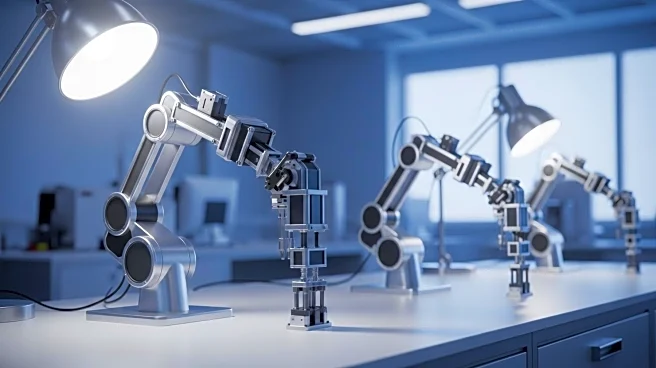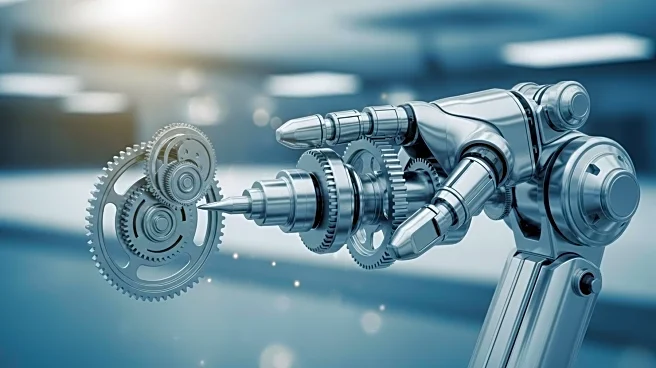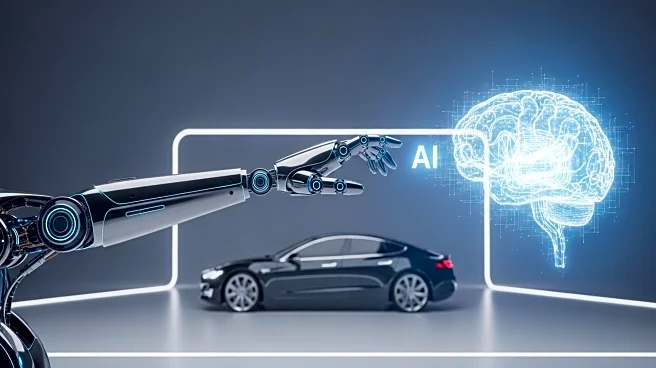What's Happening?
Sonair, a company based in Oslo, Norway, has developed a 3D ultrasonic sensor designed to improve safety in robotic systems. The sensor uses acoustic detection and ranging (ADAR) technology, which employs high-frequency sound waves to create a three-dimensional view of the environment. This technology aims to provide a more comprehensive understanding of surroundings compared to traditional LIDAR sensors, which use light beams. Sonair's sensor complements existing cameras and sensors in robots, enhancing depth perception and object detection. The company has seen strong demand for its sensor from the robotics industry, with plans for integration into new robot models. Additionally, the sensor is being utilized in industrial safety applications to automatically shut off machinery when humans enter hazardous areas.
Why It's Important?
The development of Sonair's ultrasonic sensor represents a significant advancement in robotic safety technology. As robots increasingly operate alongside humans, ensuring their safe interaction is crucial. Sonair's sensor offers a more reliable method for detecting objects and understanding environments, potentially reducing accidents and improving operational efficiency. This technology could lead to broader adoption in various industries, including manufacturing and logistics, where robots are prevalent. The sensor's ability to integrate with existing systems without major infrastructure changes makes it an attractive option for companies looking to enhance safety measures.
What's Next?
Sonair plans to scale up the adoption of its technology, supported by a recent $6 million funding round. The company aims to have its sensors widely used in robotic systems, similar to the ubiquity of cameras. As demand for safer robotic interactions grows, Sonair's technology could become a standard component in robotic design. The company is also exploring further applications in industrial safety, potentially expanding its market reach.
Beyond the Headlines
The introduction of Sonair's sensor highlights the ongoing evolution of safety standards in robotics. As robots become more integrated into daily life, addressing safety concerns will be paramount. This development may prompt other companies to innovate in the field, leading to a competitive market for advanced safety technologies. The ethical implications of ensuring human safety in robotic environments will continue to be a topic of discussion as technology progresses.

